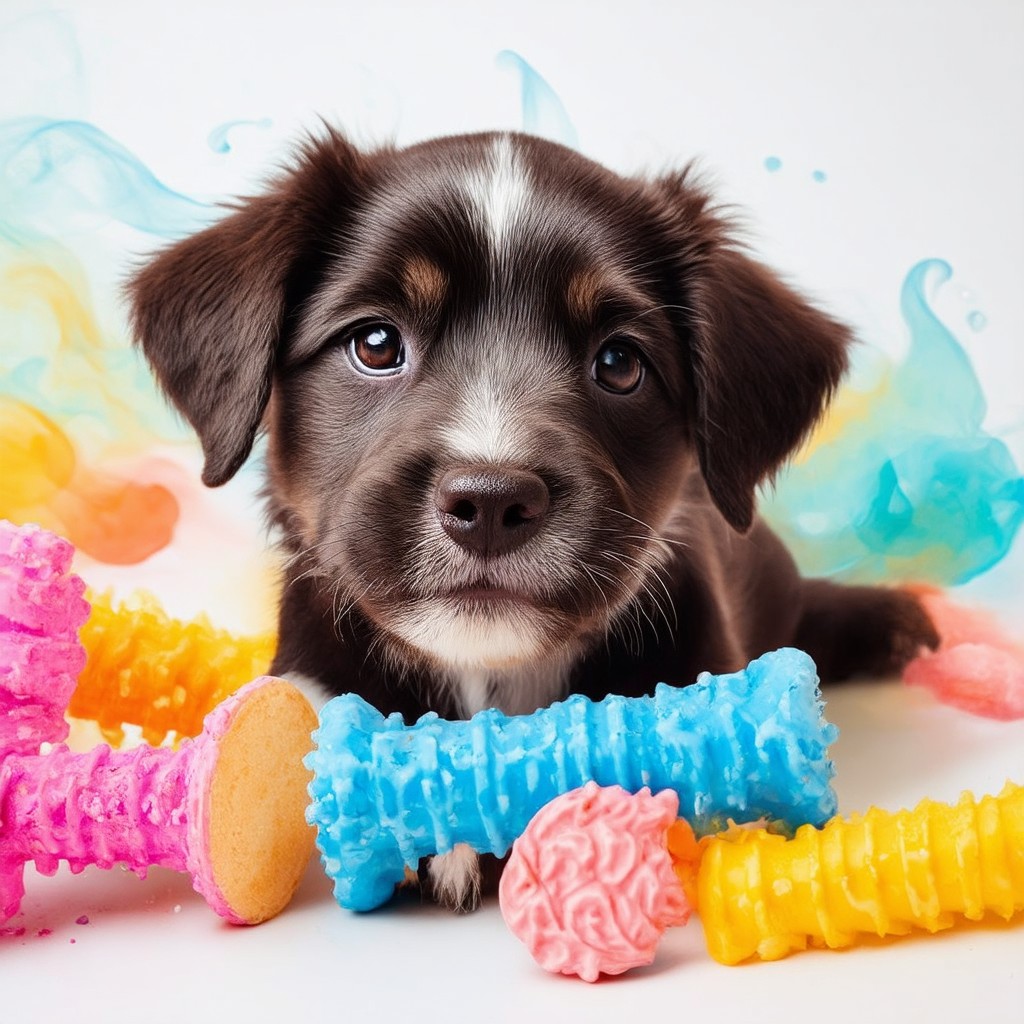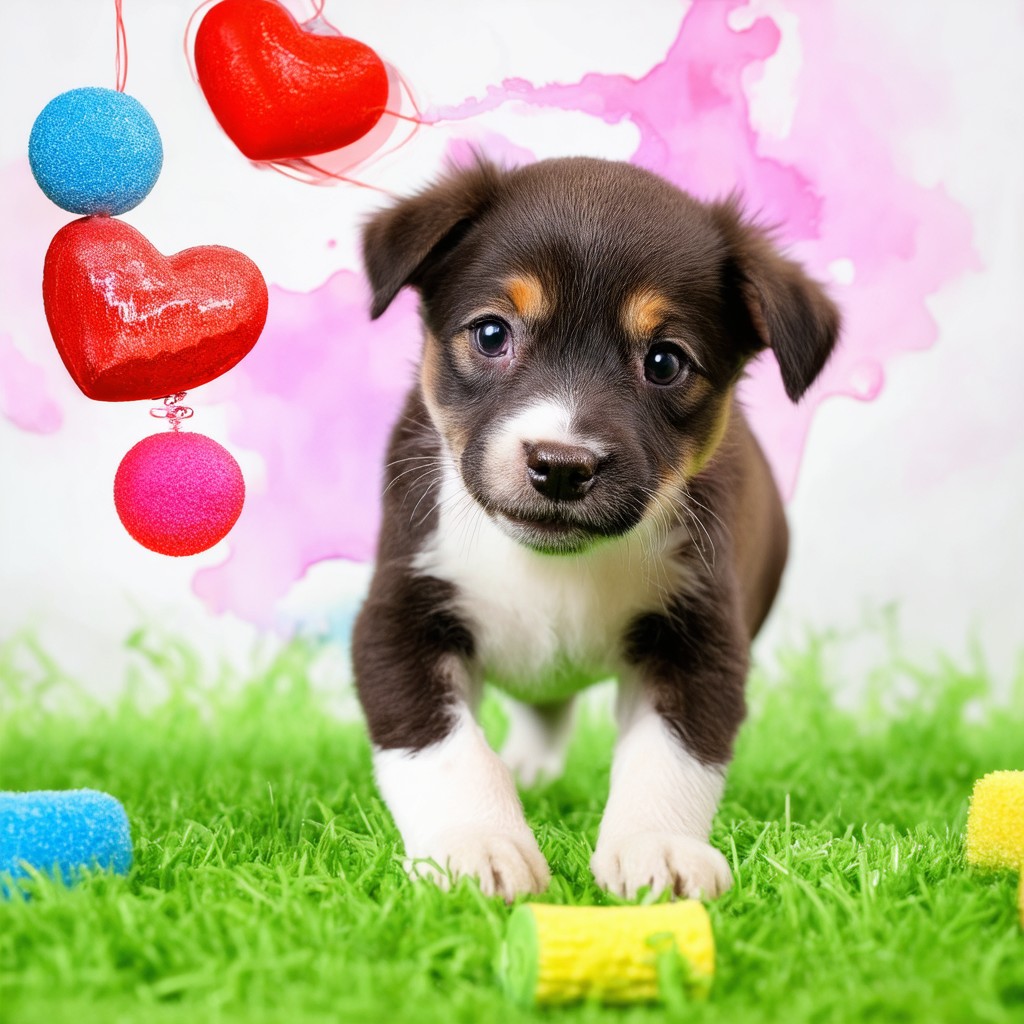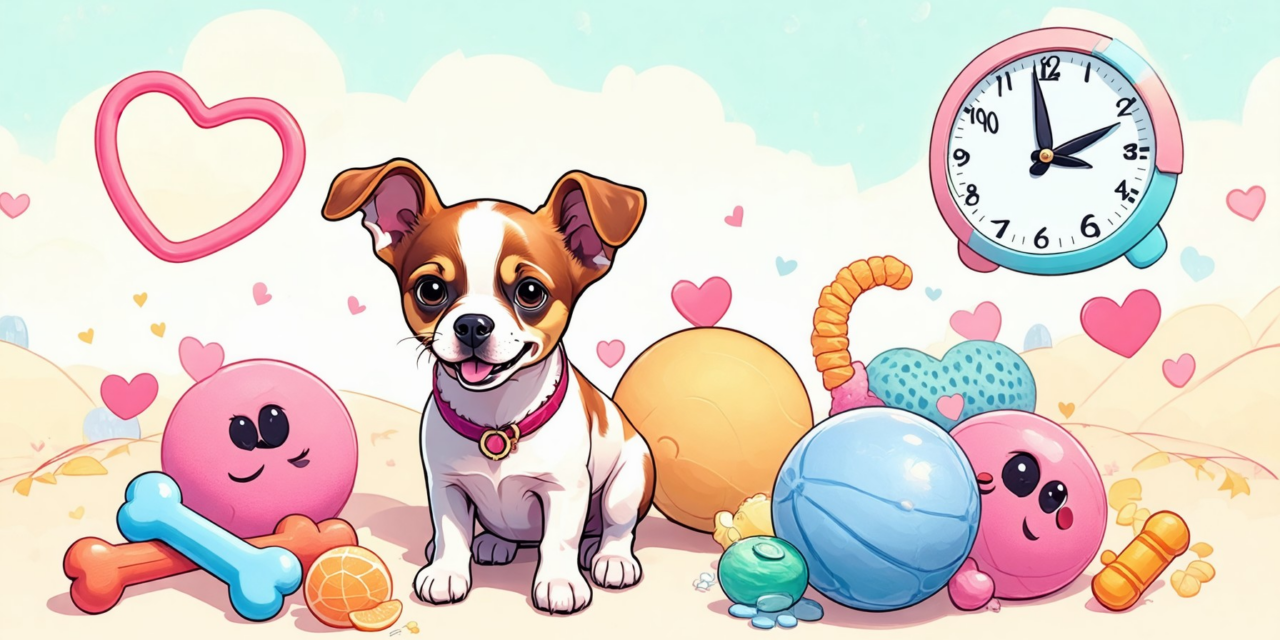Key Takeaways
- Understand that a puppy that won’t stop biting often engages in this behavior due to natural instincts, teething, or playfulness.
- Implement positive reinforcement techniques by rewarding your puppy with treats and praise when they choose toys over biting.
- Utilize redirecting strategies by offering appropriate chew toys to deter biting and encourage acceptable play.
- Recognize common triggers such as excitement, fear, and overstimulation that may lead to biting behavior.
- Be consistent in training approaches; use the same commands and involve all family members to avoid confusing your puppy.
- Seek professional help from a trainer or behaviorist if biting persists, ensuring tailored strategies for your puppy’s needs.
- Provide ample exercise and mental stimulation to reduce boredom, which can contribute to increased biting behavior.
Dealing with a puppy that won’t stop biting can be one of the most frustrating challenges for new pet owners. Understanding why your puppy exhibits this behavior is crucial, as it often stems from natural instincts and developmental phases. In this article, we will explore effective strategies to help you stop your puppy from biting and provide insights into common triggers for this behavior. We will also discuss the age at which puppies typically reduce their biting, along with positive reinforcement techniques that can aid in discipline. Additionally, we will address specific scenarios, such as how to manage biting during playtime or when your puppy targets your feet and hands. By the end of this guide, you will have a comprehensive understanding of how to get your puppy to stop biting and create a harmonious environment for both you and your furry friend.
What to do if my puppy won’t stop biting me?
Understanding Puppy Biting Behavior
Puppies often explore their world through their mouths, leading to behaviors like mouthing, nipping, and biting. Understanding the reasons behind this behavior is crucial for effective management. Puppies are naturally inclined to bite as a form of play and exploration, but it can become problematic if they direct this behavior towards humans. To address this, here are effective strategies to manage and reduce biting behavior:
- Redirect to Appropriate Toys: When your puppy begins to mouth you, immediately redirect their attention to a suitable chew toy or tug toy. This teaches them that toys are acceptable for biting. Consistently offering toys can help them learn to anticipate playtime with their toys instead of your hands or feet.
- Use Positive Reinforcement: Reward your puppy with treats and praise when they choose to play with their toys instead of biting you. This reinforces good behavior and encourages them to repeat it.
- Implement Time-Outs: If your puppy continues to bite, calmly remove yourself from the situation. A brief time-out can help them understand that biting leads to the end of playtime or attention.
- Avoid Rough Play: Engaging in rough play can encourage biting behavior. Instead, opt for gentle games that do not involve hands or feet as targets.
- Teach Bite Inhibition: Allow your puppy to mouth your hand gently, and if they bite too hard, let out a yelp or say “ouch” to mimic the feedback they would receive from their littermates. This helps them learn to control their bite strength.
- Provide Plenty of Exercise: Ensure your puppy receives adequate physical and mental stimulation. Boredom can lead to increased biting behavior. Regular walks, play sessions, and interactive toys can help expend excess energy.
- Consult a Professional Trainer: If biting persists, consider seeking guidance from a professional dog trainer or behaviorist. They can provide tailored strategies based on your puppy’s specific needs.
For further reading on puppy behavior and training techniques, the American Kennel Club offers valuable resources and insights into effective training methods. Additionally, the ASPCA provides comprehensive information on managing puppy behavior, which can be beneficial for new pet owners.
Common Triggers for Puppy Biting
Identifying the common triggers for puppy biting is essential for developing effective strategies to curb this behavior. Here are some frequent causes:
- Teething: Puppies go through a teething phase, which can lead to increased biting as they seek relief from discomfort. Providing appropriate chew toys can help alleviate this issue.
- Excitement: High energy levels during playtime can result in nipping and biting. Ensuring structured play sessions can help manage their excitement.
- Attention-Seeking: Puppies may bite to gain attention from their owners. If they learn that biting leads to interaction, they may continue this behavior. Redirecting their focus to toys can help break this cycle.
- Overstimulation: Too much excitement or stimulation can lead to biting. Recognizing when your puppy is becoming overstimulated and providing a calm environment can help reduce this behavior.
By understanding these triggers, you can better anticipate and manage your puppy’s biting behavior, leading to a more harmonious relationship. For additional insights on puppy training, visit Wellness Coaching For Life.

What to do if my puppy won’t stop biting me?
Understanding Puppy Biting Behavior
Puppy biting is a common issue that many pet owners face. Understanding the reasons behind this behavior is crucial for effective management. Puppies typically stop biting excessively as they mature, with several key factors influencing this behavior:
1. **Teething Phase**: The teething process usually occurs between 3 to 6 months of age. During this time, puppies experience discomfort as their baby teeth fall out and adult teeth emerge. This natural phase encourages them to chew and bite as a way to alleviate discomfort and explore their environment.
2. **Adult Teeth Development**: By around 7 months, most puppies will have their full set of adult teeth. This transition often leads to a reduction in biting behavior, as the discomfort associated with teething subsides.
3. **Bite Inhibition Training**: Teaching puppies bite inhibition is crucial. This involves training them to control their bite force during play and interactions. Positive reinforcement techniques, such as rewarding gentle play, can be effective. Socialization with other dogs can also help puppies learn appropriate biting behavior.
4. **Individual Variation**: It’s important to note that each puppy is unique. Some may take longer to outgrow biting behaviors, and it’s not uncommon for puppies to exhibit mouthing or nipping behaviors into their first year, especially during play.
5. **Play Biting**: Play biting is a normal behavior in puppies, often indicating playfulness or curiosity. However, it’s essential to guide them in moderating their bite force to prevent injury during playtime.
6. **Consulting Professionals**: If biting persists beyond 6 months, it may be beneficial to consult a dog trainer or veterinary behaviorist. They can assess the situation and provide tailored strategies to address biting behavior effectively.
For further insights on puppy behavior and training techniques, resources such as the American Kennel Club and veterinary behaviorists can provide authoritative guidance.
Common Triggers for Puppy Biting
Identifying the triggers for your puppy’s biting behavior is essential for effective intervention. Common triggers include:
– **Excitement**: Puppies often bite when they are overly excited, whether during playtime or when greeting people. Redirecting their energy through toys can help manage this behavior.
– **Fear or Anxiety**: A puppy may bite out of fear or anxiety, especially in unfamiliar situations. Providing a safe space and gradual exposure to new experiences can alleviate this response.
– **Attention-Seeking**: Puppies may bite to gain attention, even if it’s negative. Ignoring this behavior and rewarding calm behavior can help teach them that biting is not an effective way to get attention.
– **Hunger or Thirst**: Sometimes, biting can be a sign that your puppy is hungry or thirsty. Ensuring they have regular feeding times and access to fresh water can reduce this trigger.
Understanding these triggers can help you develop strategies to manage and redirect your puppy’s biting behavior effectively. For more tips on how to stop puppy biting, visit Wellness Coaching For Life.
How do you discipline a puppy who is biting?
To effectively discipline a puppy who is biting, it is essential to employ a combination of positive reinforcement and consistent correction strategies. Here are key steps to follow:
- Understand the Cause: Puppies often bite due to teething, playfulness, or seeking attention. Recognizing the underlying reason can help tailor your approach.
- Use a Firm “No”: When your puppy bites, immediately say “no” in a firm but calm voice. This helps the puppy associate biting with a negative response.
- Redirect Behavior: Provide appropriate chew toys to redirect your puppy’s biting behavior. This not only satisfies their urge to chew but also teaches them what is acceptable to bite.
- Implement Time-Outs: If the biting continues, calmly remove your puppy from the situation and place them in a designated time-out area, such as a puppy pen, for 30 seconds to 1 minute. This helps them understand that biting leads to the end of playtime.
- Resume Play: After the time-out, allow your puppy to return to play. If they bite again, repeat the time-out process. Consistency is key to reinforcing the lesson.
- Positive Reinforcement: Reward your puppy with treats and praise when they play gently without biting. This encourages good behavior and strengthens your bond.
- Socialization: Expose your puppy to other dogs and people in a controlled environment. This helps them learn appropriate play behavior and reduces biting tendencies.
- Professional Guidance: If biting persists, consider consulting a professional dog trainer or behaviorist. They can provide tailored strategies and support.
For further insights on puppy training and behavior management, resources such as the American Kennel Club and the ASPCA offer valuable information and guidance.
Positive Reinforcement Techniques
Positive reinforcement is a powerful tool in training your puppy to stop biting. This method focuses on rewarding desirable behavior rather than punishing unwanted actions. Here are effective techniques to implement:
- Use Treats Wisely: When your puppy refrains from biting during play, immediately reward them with a treat. This reinforces the idea that gentle play leads to positive outcomes.
- Praise and Affection: Verbal praise and petting can be just as effective as treats. When your puppy plays nicely, shower them with affection to strengthen the bond and encourage good behavior.
- Clicker Training: Consider using a clicker to mark the exact moment your puppy exhibits good behavior. Follow the click with a treat to create a clear association.
- Consistency is Key: Ensure that everyone in your household follows the same training methods. Consistency helps your puppy understand what is expected and reduces confusion.
By focusing on positive reinforcement, you can effectively teach your puppy how to stop biting and promote a healthier, happier relationship.
How to Stop a Puppy from Biting Desperately
When your puppy won’t stop biting, it can be frustrating and concerning. To effectively stop your puppy from biting, consider the following comprehensive strategies:
- Redirect Behavior: Instead of shouting “NO” or resorting to physical punishment, redirect your puppy’s biting behavior to appropriate chew toys. This teaches them what is acceptable to bite. Ensure a variety of toys are available, including rubber, rope, and plush options, to keep your puppy engaged.
- Positive Reinforcement: Reward your puppy with treats or praise when they play gently. This encourages them to associate calm behavior with positive outcomes. Consistency is key; reinforce this behavior every time they choose a toy over your hand.
- Time-Outs: If your puppy continues to bite, implement a brief time-out. Withdraw your attention by leaving the room for a minute or two. This helps them understand that biting leads to the end of playtime and social interaction.
- Socialization: Expose your puppy to other dogs and people in controlled environments. This helps them learn bite inhibition through play with other dogs, who will naturally correct them if they bite too hard.
- Training Classes: Consider enrolling your puppy in a training class. Professional trainers can provide guidance on managing biting behavior and offer socialization opportunities with other puppies.
- Understanding Puppy Behavior: Recognize that biting is a natural behavior for puppies as they explore their environment. Providing appropriate outlets for their energy and curiosity is essential.
- Consulting Professionals: If biting persists despite your efforts, consult a veterinarian or a certified dog trainer. They can assess your puppy’s behavior and provide tailored strategies.
For further reading on effective puppy training techniques, refer to resources from the American Kennel Club (AKC) and the ASPCA, which offer valuable insights into canine behavior and training methodologies.
Importance of Consistency in Training
Consistency is crucial when addressing your puppy’s biting behavior. Establishing a routine and sticking to it helps your puppy understand what is expected of them. Here are some tips to maintain consistency:
- Use the Same Commands: Always use the same words and phrases when addressing biting. This helps your puppy associate specific commands with their behavior.
- Involve All Family Members: Ensure everyone in your household follows the same training techniques. Mixed signals can confuse your puppy and hinder their learning process.
- Set Clear Boundaries: Decide which behaviors are unacceptable and enforce these boundaries consistently. For example, if your puppy bites your hands, make it clear that this behavior is not tolerated.
- Regular Training Sessions: Incorporate short, frequent training sessions into your daily routine. This reinforces learning and keeps your puppy engaged.
By maintaining consistency in your approach, you can effectively teach your puppy how to stop biting and promote positive behavior. For more insights on managing puppy behavior, visit Wellness Coaching For Life.

How to Teach a Puppy “No”
Teaching your puppy the command “no” is essential for curbing unwanted behaviors, including biting. This command helps establish boundaries and reinforces your role as a leader in your puppy’s life. Here are effective techniques for teaching this important command:
Techniques for Teaching Commands Effectively
1. **Use Clear Commands**: When teaching “no,” use a firm but calm voice. Consistency is key; always use the same word and tone to avoid confusing your puppy.
2. **Immediate Response**: When your puppy engages in biting or other undesirable behaviors, immediately say “no.” This helps them associate the command with the behavior.
3. **Redirect Behavior**: After saying “no,” redirect your puppy’s attention to an appropriate toy or activity. This teaches them what is acceptable to chew on instead of your hands or feet.
4. **Positive Reinforcement**: When your puppy stops the unwanted behavior after hearing “no,” reward them with praise or a treat. This reinforces the idea that good behavior leads to positive outcomes.
5. **Practice Regularly**: Incorporate the “no” command into daily training sessions. Regular practice helps solidify the command in your puppy’s mind, making it more effective over time.
Reinforcing Positive Behavior Over Negative
1. **Focus on Good Behavior**: Instead of only correcting bad behavior, make it a point to praise your puppy when they play gently or follow commands. This encourages them to repeat those behaviors.
2. **Create a Positive Environment**: Ensure your puppy has plenty of mental and physical stimulation to prevent boredom, which can lead to biting. Engaging toys and regular playtime can help reduce unwanted behaviors.
3. **Be Patient**: Training takes time, and every puppy learns at their own pace. Consistency and patience are vital in helping your puppy understand what is expected of them.
4. **Seek Guidance if Needed**: If you’re struggling to teach your puppy “no” or manage biting behaviors, consider consulting a professional trainer. They can provide tailored strategies to help you and your puppy succeed.
By employing these techniques, you can effectively teach your puppy the “no” command, helping to reduce biting and promote a harmonious relationship.
How to Teach a Puppy “No”?
Teaching your puppy the “no” command is essential for curbing unwanted behaviors, including biting. Here’s a structured approach to effectively communicate this command:
- Create a controlled environment: Begin training in a quiet space with minimal distractions. This helps your puppy focus on learning the “no” command effectively.
- Introduce the “no” command: When your puppy attempts to engage in undesirable behavior, say “no” in a firm yet calm voice. Consistency in tone is crucial for understanding.
- Wait for compliance: Allow a brief pause after saying “no.” When the puppy stops the unwanted behavior, immediately reward them with praise and a treat. This reinforces positive behavior.
- Gradually increase distractions: Once your puppy understands the command in a controlled setting, introduce distractions. Start with low-level distractions and gradually increase them as your puppy becomes more reliable.
- Use a verbal cue: If your puppy reaches for something inappropriate, say “no” before they can grab it. This helps them associate the command with the action.
- Implement positive reinforcement: When your puppy refrains from the unwanted behavior, reward them with treats and praise. This encourages them to repeat the desired behavior.
- Teach the “leave it” command: Instead of solely relying on “no,” introduce the “leave it” command. This teaches your puppy to ignore or move away from specific items, enhancing their obedience.
- Maintain consistency: Use the “no” command consistently across various situations. This helps your puppy understand its meaning and reinforces learning.
- Avoid punishment: The “no” command should be a corrective tool, not a punitive measure. Avoid yelling or harsh corrections, as these can lead to fear and confusion.
- Redirect to positive behaviors: Instead of just saying “no,” guide your puppy towards alternative behaviors, such as sitting or lying down. This not only stops the unwanted behavior but also promotes good habits.
- Be patient and persistent: Teaching a puppy the “no” command requires time and practice. Stay patient, consistent, and positive throughout the training process.
For further insights on effective puppy training techniques, consider resources from the American Kennel Club and the ASPCA, which provide evidence-based strategies for dog training.
Reinforcing Positive Behavior Over Negative
Reinforcing positive behavior is crucial in training your puppy to stop biting. Here are some effective strategies:
- Use treats and praise: Whenever your puppy exhibits good behavior, such as playing gently or responding to commands, reward them with treats and verbal praise. This encourages them to repeat those behaviors.
- Establish a routine: Consistency in training routines helps your puppy understand expectations. Regularly scheduled training sessions can reinforce learning and reduce biting incidents.
- Engage in interactive play: Provide toys that are appropriate for chewing and biting. This not only diverts their attention from your hands and feet but also satisfies their natural urge to bite.
- Socialize your puppy: Expose your puppy to different environments, people, and other dogs. Proper socialization can reduce anxiety and aggressive behaviors, leading to less biting.
- Monitor playtime: Supervise interactions with children and other pets to ensure safe play. If biting occurs, redirect your puppy to a toy or a more appropriate activity.
By focusing on positive reinforcement, you can effectively teach your puppy how to stop biting and promote a well-behaved companion. For more tips on managing biting behavior, visit Wellness Coaching For Life.
My puppy won’t stop biting me aggressively
Addressing Aggressive Biting in Puppies
Puppies may exhibit aggressive biting behavior for several reasons, including fear, anxiety, or overstimulation. Understanding the root cause is essential in addressing this issue effectively. If your puppy won’t stop biting aggressively, it’s crucial to remain calm and avoid physical punishment, as this can exacerbate fear and anxiety. Instead, focus on redirecting their energy and providing appropriate outlets for their biting behavior.
One effective method is to use toys specifically designed for chewing. When your puppy starts to bite aggressively, immediately offer a toy as an alternative. This not only distracts them but also teaches them what is acceptable to bite. Additionally, implementing a consistent training routine that reinforces positive behavior can help mitigate aggressive biting. For instance, rewarding your puppy with treats or praise when they play gently can encourage them to adopt better habits.
When to Seek Professional Help for Biting Issues
If your puppy’s aggressive biting persists despite your efforts, it may be time to seek professional help. Consulting a certified dog trainer or a veterinary behaviorist can provide you with tailored strategies to address the biting behavior effectively. They can assess your puppy’s temperament and offer insights into specific training techniques that may be more effective for your situation.
In some cases, underlying health issues may contribute to aggressive biting. A thorough veterinary examination can rule out any medical conditions that might be causing discomfort or pain, leading to biting. Remember, early intervention is key; addressing these behaviors sooner rather than later can prevent them from becoming ingrained habits.
My puppy won’t stop biting me and my clothes
Preventing Clothing Biting Behavior
Puppies often bite clothing as a form of play or exploration. To prevent this behavior, it’s essential to establish boundaries. When your puppy starts to bite your clothes, calmly redirect their attention to a toy or engage them in a different activity. Consistency is vital; every time they attempt to bite your clothes, redirect them to an appropriate item.
Additionally, consider using deterrents such as bitter sprays on your clothing to discourage biting. These sprays are safe for pets and can help them associate your clothes with an unpleasant taste, reducing the likelihood of future incidents.
Alternatives to Redirect Attention from Clothes
To effectively redirect your puppy’s attention from biting clothes, provide engaging alternatives that stimulate their mind and body. Interactive toys, puzzle feeders, and chew toys can keep your puppy occupied and reduce the urge to bite clothing. Regular exercise is also crucial; ensuring your puppy has ample playtime can help expend excess energy that might otherwise lead to biting.
Incorporating training sessions that focus on commands like “leave it” or “no” can further reinforce boundaries. When your puppy responds correctly, reward them with treats or praise, reinforcing positive behavior. This approach not only helps in stopping the biting but also strengthens your bond with your puppy.












